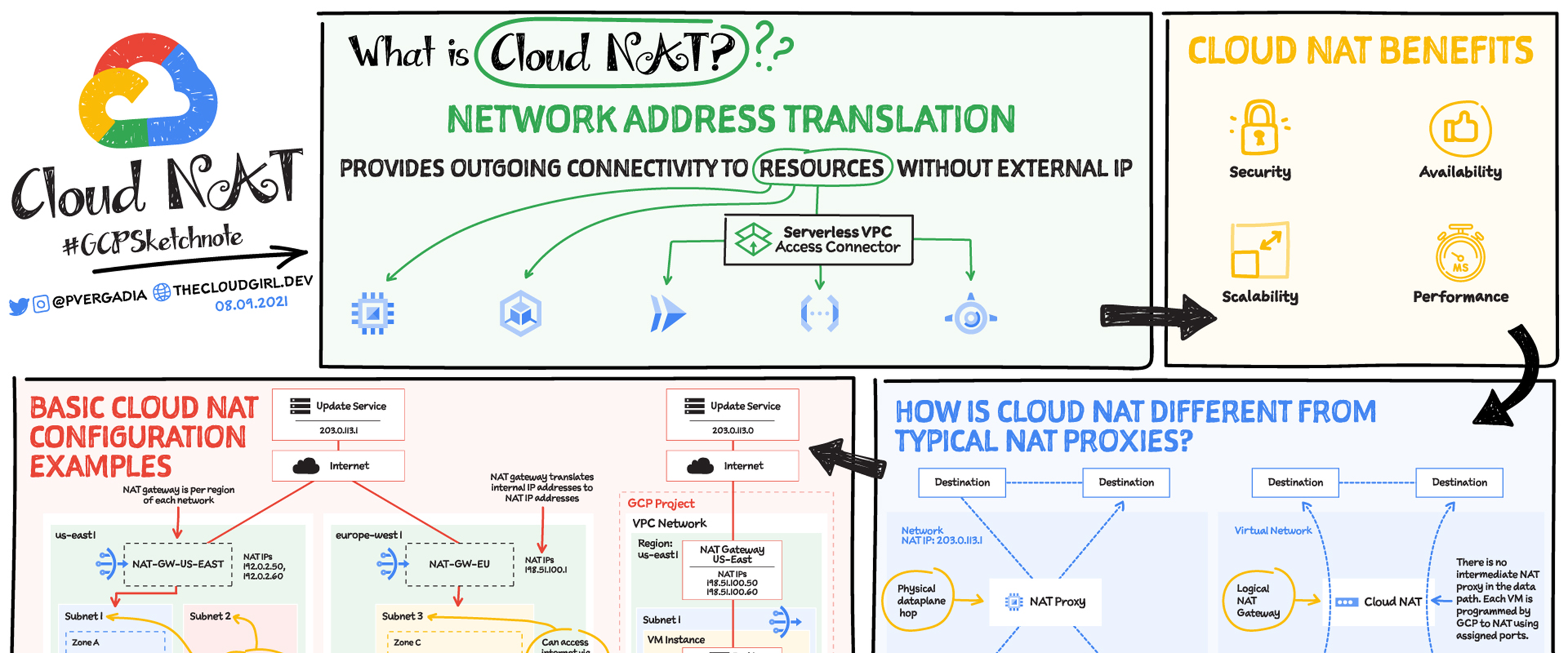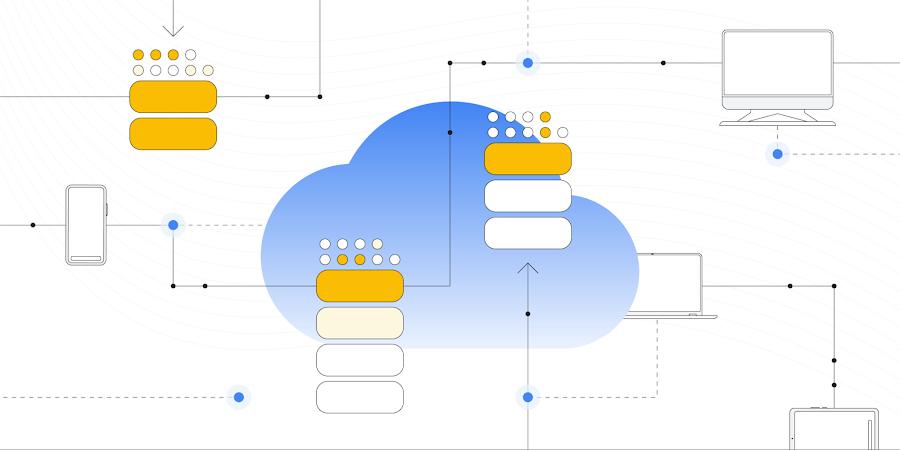Cloud NAT explained!

Priyanka Vergadia
Staff Developer Advocate, Google Cloud
Tracy Jiang
Product Manager
For security, it is a best practice to limit the number of public IP addresses in your network. In Google Cloud, Cloud NAT (network address translation) lets certain resources without external IP addresses create outbound connections to the internet.
Cloud NAT provides outgoing connectivity for the following resources:
- Compute Engine virtual machine (VM) instances without external IP addresses
- Private Google Kubernetes Engine (GKE) clusters
- Cloud Run instances through Serverless VPC Access
- Cloud Functions instances through Serverless VPC Access
- App Engine standard environment instances through Serverless VPC Access


How is Cloud NAT different from typical NAT proxies
Cloud NAT is a distributed, software-defined managed service, not based on proxy VMs or appliances. This proxyless architecture means higher scalability (no single choke point) and lower latency. Cloud NAT configures the Andromeda software that powers your Virtual Private Cloud (VPC) network so that it provides source network address translation (SNAT) for VMs without external IP addresses. It also provides destination network address translation (DNAT) for established inbound response packets only.
Benefits of using Cloud NAT
Security: Helps you reduce the need for individual VMs to each have external IP addresses. Subject to egress firewall rules, VMs without external IP addresses can access destinations on the internet.
Availability: Since Cloud NAT is a distributed software-defined managed service, it doesn't depend on any VMs in your project or a single physical gateway device. You configure a NAT gateway on a Cloud Router, which provides the control plane for NAT, holding configuration parameters that you specify.
Scalability: Cloud NAT can be configured to automatically scale the number of NAT IP addresses that it uses, and it supports VMs that belong to managed instance groups, including those with autoscaling enabled.
Performance: Cloud NAT does not reduce network bandwidth per VM because it is implemented by Google's Andromeda software-defined networking.
NAT rules
In Cloud NAT, the NAT rules feature lets you create access rules that define how Cloud NAT is used to connect to the internet. NAT rules support source NAT based on destination address. When you configure a NAT gateway without NAT rules, the VMs using that NAT gateway use the same set of NAT IP addresses to reach all internet addresses. If you need more control over packets that pass through Cloud NAT, you can add NAT rules. A NAT rule defines a match condition and a corresponding action. After you specify NAT rules, each packet is matched with each NAT rule. If a packet matches the condition set in a rule, then the action corresponding to that match occurs.
Basic Cloud NAT configuration examples
In the example pictured in sketchnote, the NAT gateway in the east is configured to support the VMs with no external IPs in subnet-1 to access the internet. These VMs can send traffic to the internet by using either the gateways’s primary internal IP address or an alias IP range from the primary IP address range of subnet-1, 10.240.0.0/16. A VM whose network interface does not have an external IP address and whose primary internal IP address is located in subnet-2 cannot access the internet.
Similarly, the NAT gateway Europe is configured to apply to the primary IP address range of subnet-3 in the west region allowing the VM whose network interface does not have an external IP address to send traffic to the internet by using either its primary internal IP address or an alias IP range from the primary IP address range of subnet-3, 192.168.1.0/24.
To enable NAT for all the containers and the GKE node, you must choose all the IP address ranges of a subnet as the NAT candidates. It is not possible to enable NAT for specific containers in a subnet.
For a more in-depth look into Cloud NAT check out the documentation.
For more #GCPSketchnote, follow the GitHub repo. For similar cloud content follow me on Twitter @pvergadia and keep an eye out on thecloudgirl.dev




